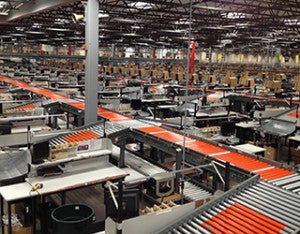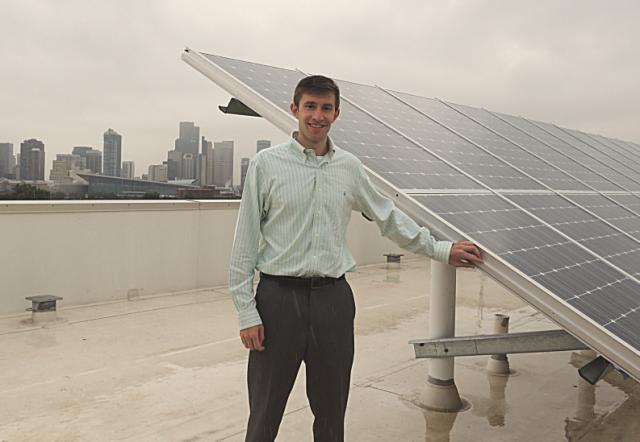As any energy manager knows, it’s one thing to find energy-saving projects that are worth doing, and quite another to get them implemented. Over the last three years, EDF Climate Corps fellows have uncovered almost a billion kilowatt hours of potential energy savings, representing $439 million in net operating savings. But our biggest question has always been, “Will the companies move forward with those energy-saving investments after the fellows leave?” Thankfully, the answer is yes: so far, companies report that they are implementing projects accounting for 86 percentof the savings identified by EDF Climate Corps fellows.
This year, as we looked back on three years of results, we noticed that many of the projects that got implemented first were lighting projects. For example, Hospital Corporation of America will roll out a lighting retrofit program across the organization, and eBay recently upgraded the lighting in a 60,000-square foot building on its San Jose campus. Other companies are employing devices to make sure the lights are on only when people need them: AT&T will installoccupancy sensors in its 250 largest central offices, and Sungard is optimizing the lighting timers in its New York City office.
This is no surprise if you’ve ever looked at the ROI on lighting projects. The upfront costs tend to be relatively low – zero in the case of delamping or switching timer settings – so payback time is short. And lighting projects are pretty straightforward to identify. You can often spot ways to cut lighting costs just by walking through a building, and use a $50 light logger to document when the lights are on and don’t need to be, as our fellow at AT&T did.
Beyond lighting, EDF Climate Corps companies are also implementing upgrades to HVAC systems, office equipment, and data centers. Eaton is moving forward with an air circulation improvement in a North Carolina plant that could yield an annual electricity reduction of 2.5 million kWh. eBay is currently installing power management software for all of its PCs. And Cisco has raised temperatures in some of its research labs, which could save the company about $1.8 million and 18 million kWh of electricity annually.
But if we’ve learned anything about energy efficiency over the last three years, it’s that it has as much to do with changing behavior as changing lightbulbs. And EDF Climate Corps fellows have contributed to several projects that integrate energy and environmental data into a range of business decisions.
For example, Compass Group North America created a web-based toolkit for its food service clients, illuminating choices they can make to cut their carbon emissions. And Diversey has introduced several decision-support tools with the help of its EDF Climate Corps fellow, including one that factors energy and carbon emissions into capital expenditures, and another that tracks savings from avoided travel. As the firm’s global travel is 10 percent of its carbon footprint, Diversey estimates $6 million in annual savings from reduced travel that can be invested in other energy projects.
Putting the facts about energy use and greenhouse gas emissions into decision-makers’ hands is a powerful way to spotlight the business and environmental benefits of energy efficiency, and move energy-saving projects forward. Another bright idea brought to you by EDF Climate Corps.
Sign up to receive emails about EDF Climate Corps, including regular blog posts by our fellows. You can also visit ourFacebook page to get regular updates about this project.
 Business leaders have long agreed on the “why” of environmental management: seeing the value in increased profits, reduced waste, and a smaller carbon footprint. But the “how” has often been the stumbling block.
Business leaders have long agreed on the “why” of environmental management: seeing the value in increased profits, reduced waste, and a smaller carbon footprint. But the “how” has often been the stumbling block.










